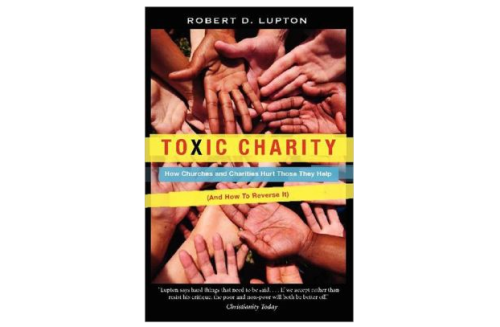A popular book in the service-learning literature asks the important question, Where’s the Learning in Service-Learning? —and it has guided many educators to community engagement practices that maximize student learning.
At a recent event at Hamline University, Robert Lupton, the author of Toxic Charity: How Churches and Charities Hurt Those They Help, essentially asked people to think critically about the other side of that question. Where’s the service in service-learning and other efforts by volunteers or nonprofits? Lupton puts forth a strong argument that “most mission trips and service projects:
- weaken those being served,
- foster dishonest relationships, and
- erode participants’ work ethic, and deepen dependency.”
His book is by no means simply intended to chastise and blame. It contains a message of hope that the “compassion industry” can be changed and that virtuous people can do good. As a place to begin, he offers an Oath for Compassionate Service.
- Never do for the poor what they have (or could have) the capacity to do for themselves.
- Limit one-way giving to emergency situations (crisis situation=YES, chronic situation=NO).
- Strive to empower the poor through employment, lending, and investing, using grants sparingly to reinforce achievements.
- Subordinate self-interests to the needs of those being served.
- Listen closely to those you seek to help, especially to what is not being said – unspoken feelings may contain essential clues to effective service.
- Above all, do no harm.
Lupton’s book is filled with examples from his own four decades working on inner-city poverty. For example, he talks about a Christmas charity tradition where people would ‘adopt ‘ a poor family and purchase gifts for the children based on knowing a child’s gender and age, and then deliver those gifts to the family’s home. Mothers would politely bear the brunt of the humiliation and fathers who felt emasculated (Lupton’s word), would slip out the back door, as the evidence of their inadequacy was left behind by the suburban folks doing them a service. Meanwhile, as Lupton puts it, “children get the message that the ‘good stuff’ comes from rich people out there and it is free.”
The non-toxic solution to this annual program was to re-direct the giving to help set up a seasonal Christmas store where financial donations would go toward reducing the cost of new merchandise, and where parents could work and earn the money to buy presents that they themselves picked out. Meanwhile, some residents are learning useful job skills in the store.
This would be a great reading for anyone interested in an honest conversation about going beyond good intentions. How have you tried to develop service-learning courses and community partnerships that are genuinely transformative? That advance both students’ learning and community members’ well-being?
John Hamerlinck



